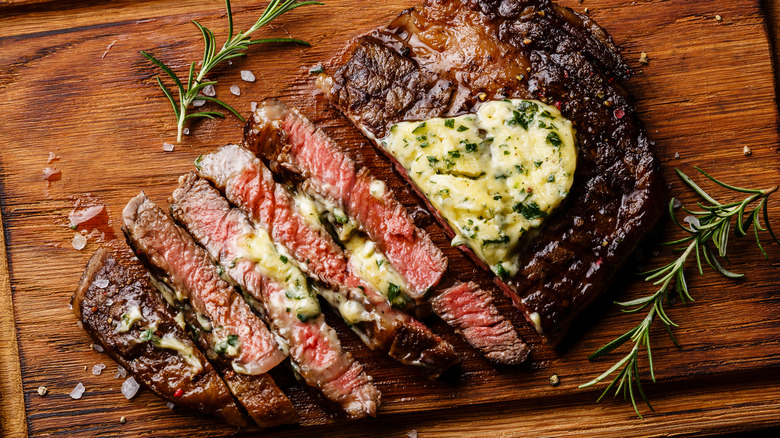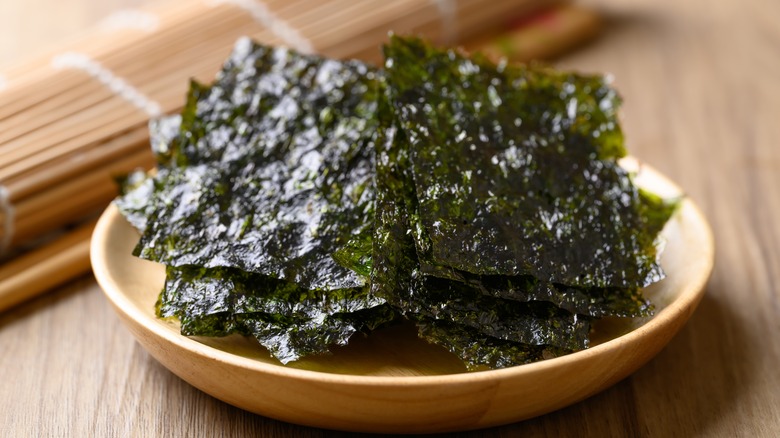The Umami-Packed Compound Butter Your Next Steak Needs
We may receive a commission on purchases made from links.
There are many essential ingredients for Japanese cooking, but few are as important to the heart of the cuisine as seaweed. While we usually refer to seaweed as a monolith, there are more than 10 types of edible seaweed, and nori and kombu are among two of our favorites. Not only do seaweeds impart incredible brininess and a unique umami taste that brings an extra depth of flavor, but consuming seaweed is beneficial for your health and is an underrated superfood that you should be eating more of. Seaweed is a good source of vitamins and minerals including iodine, which our bodies do not produce, can keep gut bacteria at a healthy level, and can also decrease the risk of heart disease.
While David Chang uses kombu compound butter for boosting a filet of bass, it would also be an amazing addition to a juicy grilled steak. The umami and saltiness naturally found in seaweeds like kombu and nori helps cut through the richness of the meat, while also giving the butter a distinct salinity that's hard to replicate. Nori is most commonly sold in dried sheets and is extremely easy to work with, but kombu requires slightly more effort. Most frequently used as the base for a dashi broth, kombu is heartier and less fragile than nori and needs to be soaked and rehydrated before use. You can then dry and finely chop it to incorporate it into a compound butter.
How to use seaweed in compound butters
Follow this simple method for making compound butter and add any type of seaweed you like, but nori and kombu are easy to find and tend to have the best flavor. You can finely chop the nori by hand, or blitz it quickly in a food processor before adding it to softened butter. If you're looking for even more umami wow factor, you can add a spoonful of white miso paste to the compound butter as well. As with any salted condiment, make sure you taste as you go along so the compound butter isn't too salty, and it's best to use unsalted butter when incorporating salty ingredients so you have more control. If you're feeling extra fancy and want to visually impress your guests, you can roll the outside of the compound butter log in more chopped seaweed, or even furikake for extra crunch.
A seaweed compound butter would be delicious on top of a baked potato served alongside your steak, as kombu and other seaweeds impart a salty taste of the ocean without being overpowering or fishy-tasting. You can serve sliced steak with nori compound butter alongside braised bok choy and freshly steamed rice topped with furikake for more texture and umami. If you're seeking a lighter lunch, seaweed butter-topped steak would pair perfectly with a big salad of tender lettuces, smashed marinated cucumbers, pickled ginger, and cubed avocado.

